Along Bitonto’s ancient Via delli Mercanti, which connected the town’s main gate, Porta Baresana, and the Cathedral, in what could be called the Renaissance heart of the town, stands Palazzo Sylos Calò, a noble building that owes its name to Giovanni Alfonso Sylos, a Spaniard from Burgos who restored a medieval-era building in the second half of the 16th century, adding another floor on the spectacular loggia overlooking the most important square in the ancient town, now called Piazza Cavour. Because of its appearance, which offers anyone who admires the palace an accomplished example of Bitonto’s Renaissance civil architecture, in 1902 the Ministry of Education had it included in theList of Italy’s Monumental Buildings. So, an architectural treasure of the city that has become further significant for Bitonto’s history since 2009, when the palace was chosen to house the National Gallery of Apulia, the region’s first national gallery dedicated to modern and contemporary art.
Externally, the palace presents itself in its Renaissance appearance, with a loggia on columns and pillars and a small inner courtyard, an outlet to the outside of many rooms on the ground floor; a two-flight staircase also leads to the piano nobile, where the rooms are united and often communicating thanks to a terrace-cum-lobby placed above the loggia. The portal, on the other hand, features rusticated ashlars and pilasters and two decorative medallions depicting imperial portraits in profile.
 |
| The facade of Palazzo Sylos Calò, home of the National Gallery of Apulia |
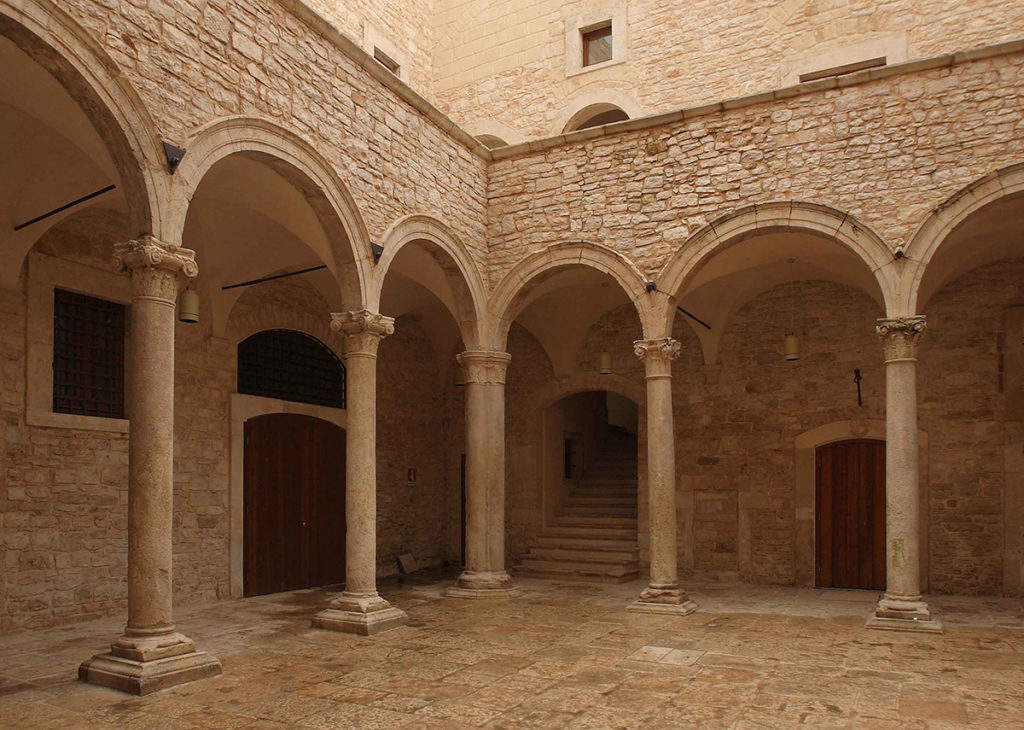 |
| The courtyard of Palazzo Sylos Calò |
The history of the National Gallery of Apulia, also known as the “Girolamo and Rosaria Devanna” Gallery, began in 2004, following an act of great generosity on the part of the owners of a rich and extensive collection of paintings, siblings Rosaria and Girolamo Devanna, originally from Bitonto. The two siblings owned an exceptional collection of works of art that included hundreds of paintings and drawings (229 paintings and 108 drawings were donated to the state), capable of covering four centuries of history, from the 16th to the 20th century, the result of a great passion for art. A strong passion accompanied by so much generosity and a great gesture of sharing, since in July 2004, the Rosaria and Girolamo decided to donate their complete collection to the State, with the intention of making it public and therefore visible to all, obviously wishing that the works would not be dispersed but, on the contrary, that they would be allowed to be admired in their city and territory. Therefore, at the conclusion of all the necessary steps, from cataloging and documentation to the choice of the museum location, from restoration to the realization of everything related to the musealization of the works, including the didactic apparatus and a short guide to the museum, the Gallery opened its doors to the public five years later.
Girolamo and Rosaria Devanna (the latter passed away in February 2019, at the age of seventy-one), by profession respectively a professor of American literature at the University of Urbino and a middle school literature teacher, both lacked academic training in art history but deeply passionate about the subject and fine connoisseurs in constant contact with art historians, specialists and museum directors, began collecting art since the 1960s, driven by a great love of art and the desire to establish themselves precisely through the collection, with its pieces collected following two substantial logics: the first, the taste of the two collectors, and the second, the desire to create a collection that would tell the story of art from the 16th century onward. The works were gathered mainly through purchases and exchanges with other collectors, and in the collection’s catalog, published in 2005 shortly after the donation, Claudio Strinati traced the underlying motivations that led to the establishment of the impressive collection: “the Devanna collection was formed over long years of passionate and highly personal research,” the art historian wrote, “developed according to criteria of a taste and attention to Antiquity that have been rewarded by valuable discoveries and many significant results.” Strinati then went on to talk about the personality of Girolamo Devanna, of the two brothers he was the first to have begun collecting works of art: “Devanna falls into that category of collectors for whom the first and basic point lies in the challenge, generous and disinterested, with other experts in the inexhaustible search for the work of art to be acquired. Devanna, a man of vast culture and wide interests, certainly does not disdain the consultation and advice of art historians and critics and other collectors, and, indeed, his scrupulousness in documenting and comparing different ideas has always been admirable, but at the same time he also conceives of the collection as an affirmation of his own talent and ability to discover and identify.”
For these reasons, the doors of the Devanna house were always open to scholars, antiquarians, and experts who always appreciated the vastness and variety of the collection, although it did not follow a precise logical thread: the two brothers used to follow market proposals, rather than go in search of particular pieces (an eventuality that nonetheless sometimes occurred): the collection, Strinati explained, was not built with the purpose of proving a specific thesis, “such as the reconstruction of an environment, a school or individual personalities.” There was no shortage of preferences, however: in particular, underlying the interests of the two collectors was, Rosa Lorusso Romito wrote, a curiosity for the “spectacular representations of counter-reformed pietism that referred to the altarpieces and the scenographic decorations of domes and false ceilings of Bitonto’s churches,” so much so that local art of the seventeenth century plays an important role in the Devanna collection. It was not, however, as mentioned, a matter of collecting motivated by academic interest: the choices of the Devanna brothers were dictated, Lorusso Romito continued, “certainly by the contingencies of the market and the financial situation of the moment, but always inspired by a taste for beauty and an innate curiosity for different artistic forms and cultures.” Choices that led to “fortuitous purchases,” and also to “intuitions and discoveries pursued along bumpy paths, the outcome of patient ’lurking’ or of often long and arduous bargaining, or finally of exchanges as necessary as they were painful, but which led the main collector to procure now works by great masters, now works ’minor’, by lesser-known artists, for which the original intuition was later comforted by the recognition of artistic historiography, now finally paintings that are still the subject of contradictory attributional hypotheses, but which nevertheless are of certain interest due to their very high quality, not only to insiders.” And if Girolamo has always been, in a way, the public face of the collection and the first “signer” of the choices, Rosaria (who constantly participated in her brother’s decisions) is mainly credited with a role related to their preservation: she is said to have been the one who pushed her brother to donate the first portion of the collection to the state, and she was always in charge of the care of the works that had instead remained in his residence in Bitonto.
In any case, for the Devanna family, the collection they brought together through a common cultural interest and a shared passion for history and artistic traditions was to represent a comprehensive collection, capable of crossing their region and beyond. Indeed, works are included, including paintings and drawings, by great Italian and European artists (French, German, English), and as far as contemporary artists from overseas are concerned. Masterpieces, however, exemplify a general discovery of the unseen and of the various forms of figurative art. A desire already witnessed by siblings Girolamo and Rosaria and continued in the musealization phase of the Gallery is to arouse in visitors a certain curiosity for aspects related to the works on display, which is followed by a desire to learn more and to know and even to return to the museum premises several times. Indeed, walking through the various rooms of the museum, one can perceive this attention in presenting the body of works as the result of a careful private collection and in enticing the public not to exhaust with a simple visit the knowledge of the Gallery, but to continue the discovery by following the most diverse aspects of approndissement.
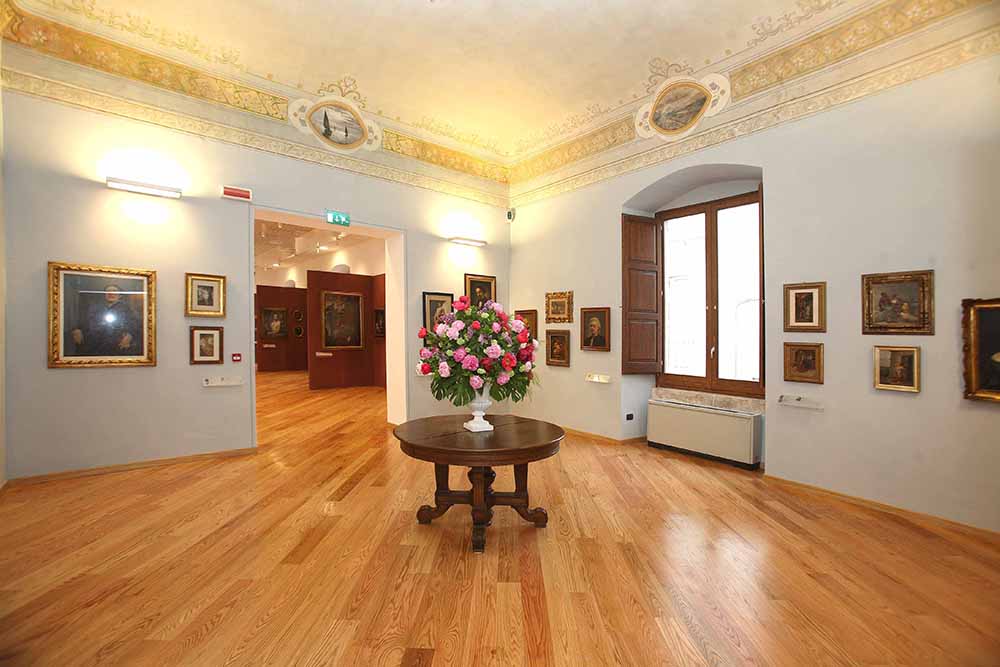 |
| Hall of the National Gallery of Apulia |
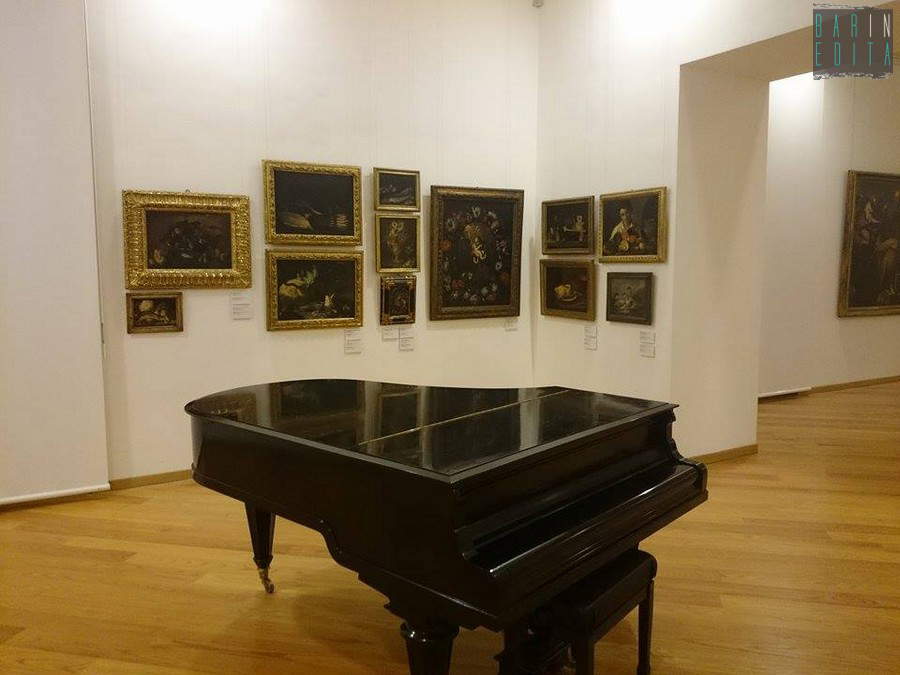 |
| Hall of the National Gallery of Apulia |
Particularly relevant is the presence of numerous sketches, preparatory studies, replicas or ancient copies typical of a collection that mostly comes from the antiquarian market; and as far as drawings are concerned, one notices the variety of techniques used, such as inks, pastels, charcoals, sanguine, watercolors on paper or on parchment, and of the artists who made them between the 16th and 20th centuries. However, in spite of the studies carried out and published and the files on the works that highlight the rich complexity of this heritage, uncertainties about attributions, iconographies and chronologies still remain. A museum, therefore, that is still open to new reflections on unresolved questions and new contributions from scholars and critics. Visiting the Devanna Gallery also traces, as mentioned, four centuries of art history, accompanied by many of the greatest masters: the exhibition itinerary is divided into five sections distributed on the two levels of the ancient palace; on the upper floor there are rooms dedicated to the 16th, 17th, 18th and 19th centuries, while on the lower floor there is only the section dedicated to the 20th century. The extensive collection now boasts more than 350 paintings that visitors can admire and discover by following a clear chronological thread.
The tour does not open, however, with a 16th-century work: welcoming visitors is a 14th-century Head of a Saint, reportedly attributed orally by Federico Zeri to Giovanni da Rimini, one of the leading Giottesque painters of northern Italy. It is a fragment of a larger work, and has not yet been thoroughly studied: for the time being, it is preferred to refer it to a more generic Adriatic area. The small portion of the table is but one of Devanna’s many discoveries. Prominent among them, for example, is a Nativity referred to Pietro Negroni known as lo Zingarello (Cosenza, 1505? - Naples, 1567), an enigmatic artist close to Polidoro da Caravaggio, whom he most likely met in Messina, where both painters were in the fourth decade of the 16th century, but who also shows some knowledge of other painters from the northern area (such as Giulio Romano and Pellegrino Tibaldi). The peculiarity of this painting lies in the fact that the usual iconography is reversed: usually, it is the Virgin who uncovers the Child Jesus, while here the exact opposite happens, with the veil being lifted by St. Joseph. The work dates to about 1560 (the dating was suggested by scholar Sylvie Béguin, who related the panel to the altarpiece depicting the Madonna and Child with Saints Andrew and James, signed and dated 1555 by Negroni: it was probably executed for the Church of the Cross of Lucca in Naples and is now at the Musée des Beaux-Arts in Orléans), a time when in the South (and elsewhere) the cult of St. Joseph experienced a certain popularity: it is therefore conceivable that the commissioner of the work, a devotee of Christ’s putative father, wanted for that reason to confer this unusual role on St. Joseph. Still to remain in the sphere of 16th-century art, one of the most discussed paintings in the collection is the Portrait of a Monk (or Portrait of a Friar with White Habit), an unusual portrait of a Dominican friar that in 1999 was first referred by the scholar Maurizio Marini to El Greco (Domínikos Theotokópoulos; Candia, 1541 - Toledo, 1614): an attribution also supported by another leading art historian (as well as among the greatest El Greco specialists), Lionello Puppi, and around which the debate has recently reopened.
One of the symbolic works of the National Gallery of Apulia is a painting by Giovanni Lanfranco (Parma, 1582 - Rome, 1647), the Commiato di Cristo dalla madre, first published in 1995 by Emilio Negro, who popularized it. The history of this important canvas, which emerged on the Roman antiquarian market in 1970, is not known: we can only speculate that it is a work whose commission matured in Franciscan circles, among which the unusual apocryphal iconography of the moment when Christ takes leave of his mother before leaving for Jerusalem on the eve of Passion Week was widespread. In this painting, where the main group (the one with Christ kneeling, the Mother blessing him, and St. John standing observing the scene), almost literally traces the work of homologous subject that Correggio (Antonio Allegri; Correggio, c. 1489 - 1534), Lanfranco’s countryman, painted around 1517 and which is now in the National Gallery in London, the composition is particularly crowded, with the characters, distinguished by their pale coloring, arranged along the two diagonals of the painting in an almost symmetrical manner: modes (the tones, the features of the characters, the draperies), found in other paintings made at the turn of the 1710s and 1920s, have led scholars to date the work to around 1620. Another much-debated work is a splendid Christ Mocked dating from the mid-17th century: variously attributed to the Genoese Luciano Borzone (Genoa, 1590 - 1645), it has more recently been traced to the hand of the Sienese Bernardino Mei (Siena, 1612 - Rome, 1676). Then there is also room for a great local artist, Giuseppe De Nittis (Barletta, 1846 - Saint-Germain-en-Laye, 1884): in the Devanna collection is one of his Views of Trafalgar Square executed when the artist, in 1878, stayed for some time in London painting several views of the English capital. The painting, signed, is supposed to be part of a series of London views that the “Italian Impressionist” painted that year for the English banker Kaye Knowles and that are now divided among various collections: the Bitonto one stands out for its unusual vertical cut, as if the artist painted traveling through the city in a carriage and looking out the window. Again, the Devanna’s interest in twentieth-century art is mainly exemplified by the American paintings, which fully reflect Girolamo Devanna’s interests: these include drawings by Beatrice Wood (San Francisco, 1893 - Ojai, 1998), such as Situation, a pencil and watercolor work from 1925 that offers some of the typical elements of the American painter and ceramist’s graphic work, such as the smoky atmosphere, simplified forms, and characters with elusive faces.
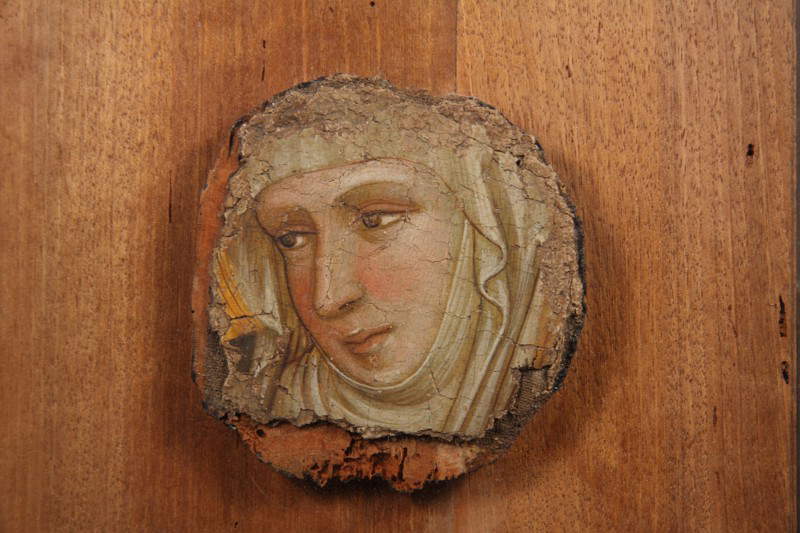 |
| Adriatic Ambit, Head of a Saint (14th century; fresco fragment, 8.3 x 8.5 cm; Bitonto, National Gallery of Apulia “Girolamo and Rosaria Devanna”) |
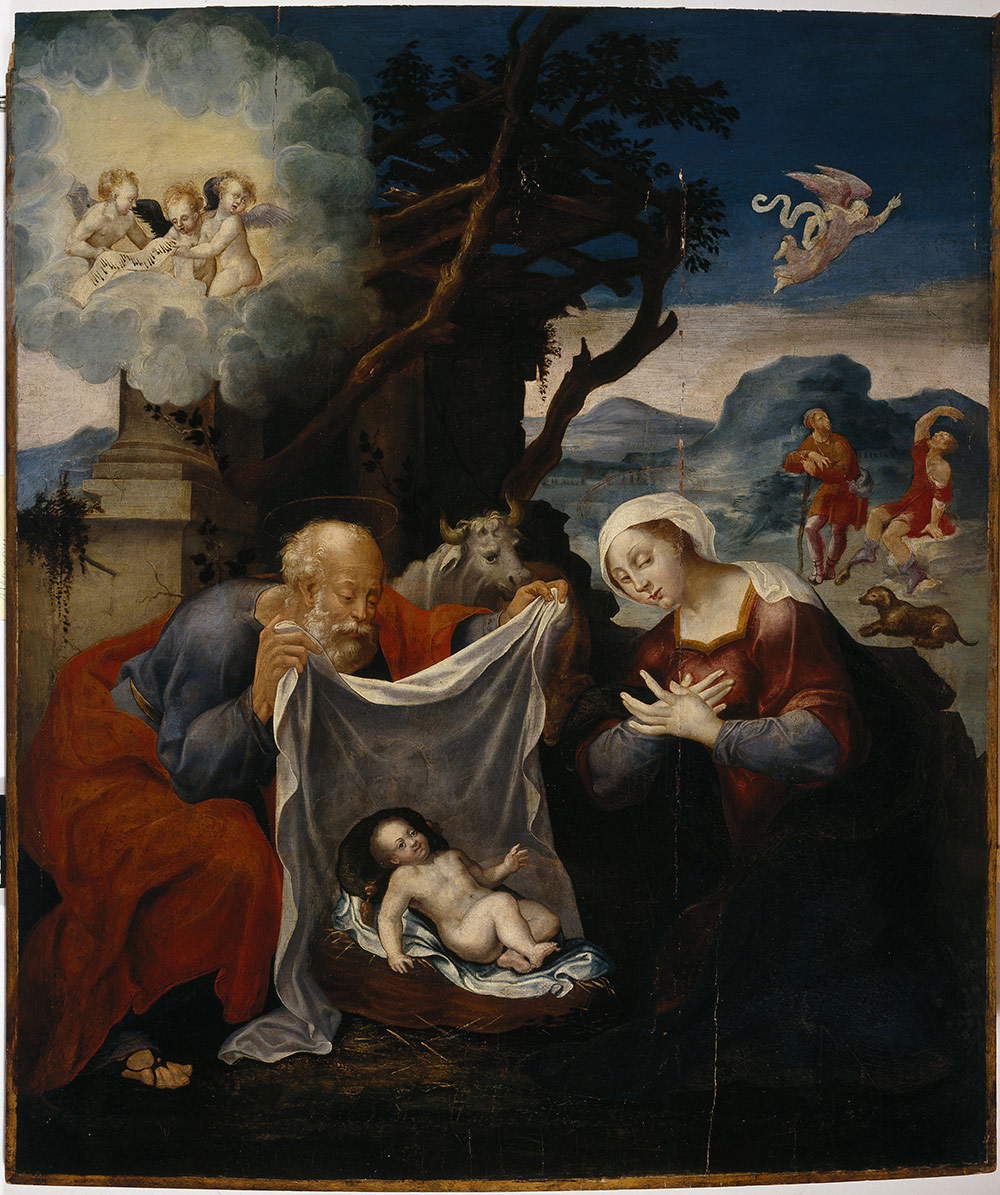 |
| Pietro Negroni called lo Zingarello, Nativity (c. 1560; oil on panel, 102 x 85 cm; Bitonto, Galleria Nazionale della Puglia “Girolamo e Rosaria Devanna”) |
 |
| Giovanni Lanfranco, Commiato di Cristo dalla madre (c. 1620; oil on canvas, 93 x 126 cm; Bitonto, Galleria Nazionale della Puglia “Girolamo e Rosaria Devanna”) |
 |
| Bernardino Mei, Christ Mocked (c. 1650-1660; oil on canvas, 90 x 68 cm; Bitonto, National Gallery of Apulia “Girolamo and Rosaria Devanna”) |
 |
| Giuseppe De Nittis, View of Trafalgar Square in London (c. 1876-1878; oil on canvas, 21 x 12.5 cm; Bitonto, Galleria Nazionale della Puglia “Girolamo e Rosaria Devanna”) |
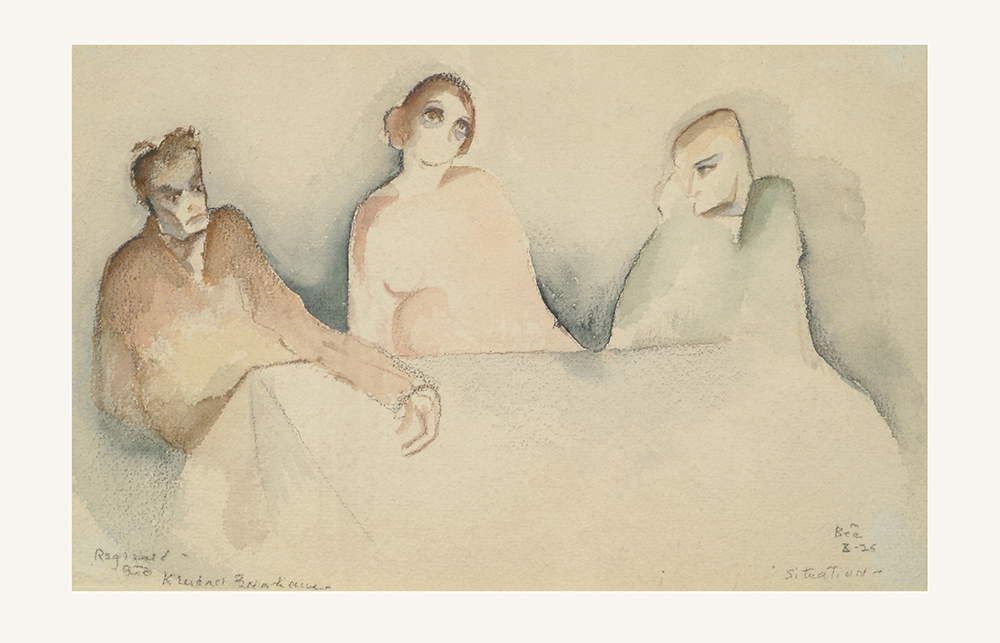 |
| Beatrice Wood, Situation (1925; pencil and watercolor on paper; Bitonto, Galleria Nazionale della Puglia “Girolamo and Rosaria Devanna”) |
The works, as mentioned, are divided into rooms corresponding to different centuries. In addition to the works discussed above, the rooms of the 16th century house a Portrait of a Gentleman attributed to Titian, and more works by important artists who worked in the South during the 16th century, starting with Leonardo Corona and Giovanni Filippo Criscuolo, but there is no shortage of artists representing other regional schools: for example, the collection includes a work attributed to Marco Pino from Siena, there are works by Vincenzo Pagani from the Marche region, and there is also a painting by Giovanni Ambrogio Figino from Milan. For the seventeenth century, they range from Giovanni Baglione to Jan Miel (self-portraits of both are present), from Nicolas Poussin to Simon Vouet, and again southern painting is well represented with Andrea Vaccaro, Cesare Fracanzano, and Francesco Antonio Altobello (the latter, moreover, originally from Bitonto). There are also works attributed to Orazio Gentileschi and Salvator Rosa. The eighteenth-century section is very rich: there are two important works (a St . Paul and a St. Vincent Ferrer) by Francesco De Mura, there are paintings by Corrado Giaquinto, Sebastiano Conca (and the latter’s grandson, Tommaso Maria Conca), Francesco Trevisani, Pietro Fabris, and Camillo De Vito. Foreign painting is represented by William Hamilton, Thomas Lawrence, François-Xavier Fabre, and there is also a King Lear by one of the fathers of Romanticism, the Swiss Johann-Heinrich Füssli. Mature Romanticism is represented in the nineteenth-century rooms by Eugène Delacroix, and for nineteenth-century Italian painting, in addition to the aforementioned De Nittis, there are works by Domenico Morelli, Francesco Saverio Altamura, Giuseppe Carelli, Gabriele Smargiassi, Giuseppe Casciaro, and more. The tour concludes with 20th-century art, where works by Emilio Notte, Beatrice Wood and Joseph Stella stand out.
Today, the National Gallery of Apulia is a museum that attracts about 20,000 visitors each year: 2018, in particular, was the record year, with the figure of 21,586, up steadily from previous years, and there is further room for growth, since the museum represents one of the richest collections in Apulia. The state, said Girolamo Devanna, seemed to him and his sister “the most reassuring structure for the preservation of the collection and for its development within the framework of a model not merely tied to localist schemes, which could represent a broadening of the cultural boundaries of our region.” A precious heritage that has thus become the heritage of all Italian citizens, who will always be grateful to the munificence of the Devanna brothers.
Warning: the translation into English of the original Italian article was created using automatic tools. We undertake to review all articles, but we do not guarantee the total absence of inaccuracies in the translation due to the program. You can find the original by clicking on the ITA button. If you find any mistake,please contact us.